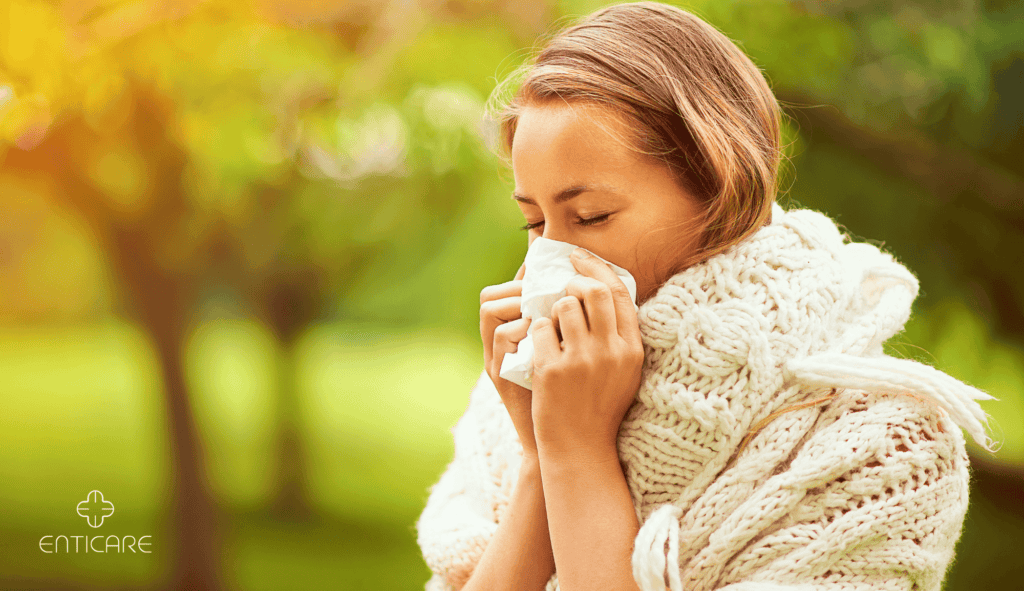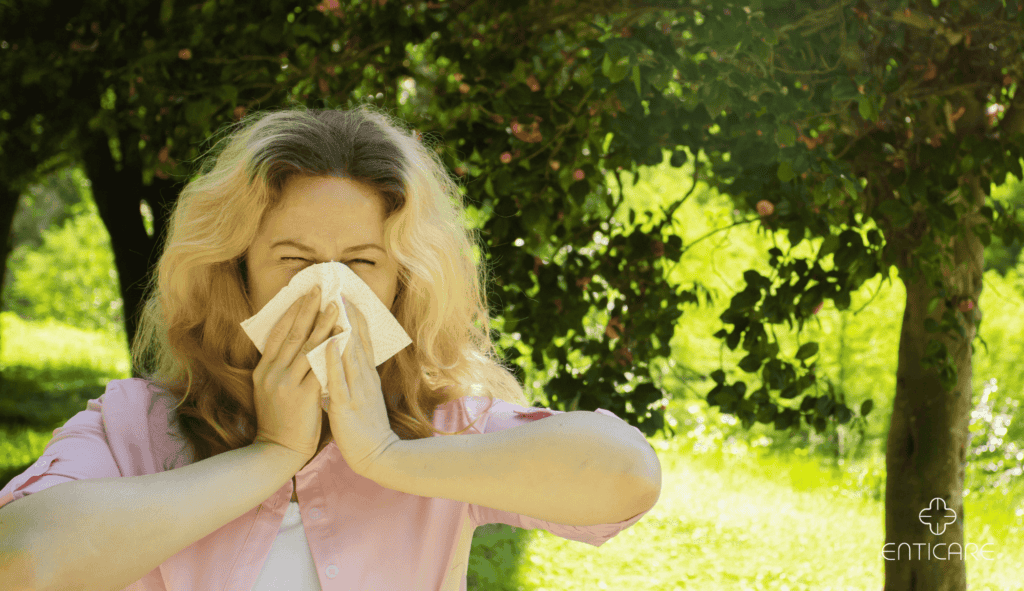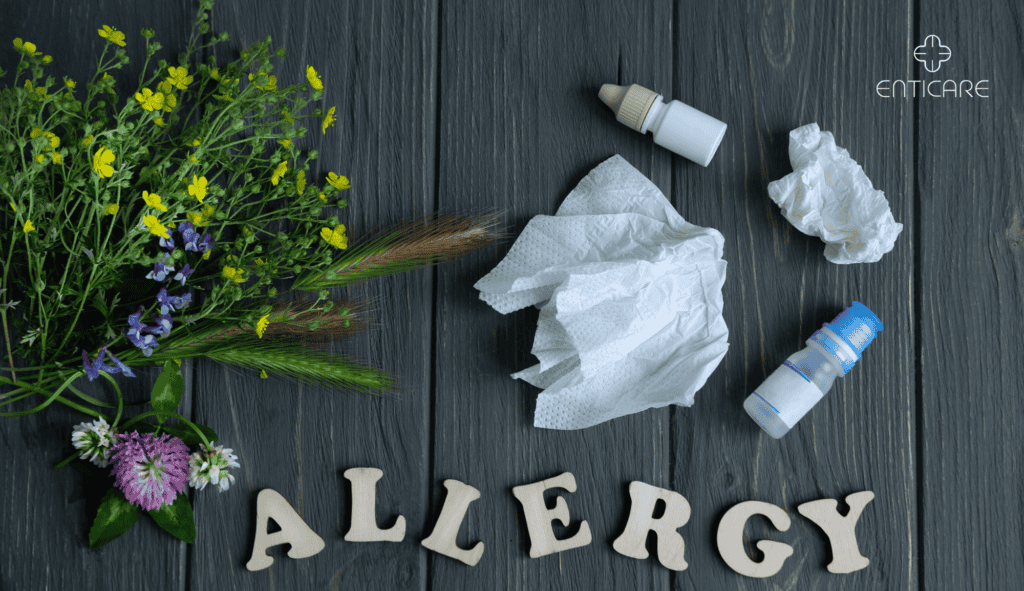As summer fades and the crispness of fall begins, many look forward to cozy sweaters, autumn colors, and seasonal treats. But for those with allergies, fall can mean an increase in symptoms triggered by airborne allergens that seem to come out of nowhere, disrupting daily life and leaving many wondering, “Why are my allergies so bad this fall?” Here’s a deep dive into the causes, symptoms, and ways to manage fall allergies during increasingly longer allergy seasons to help you breathe easier this season.

Understanding Fall Allergies: What’s Triggering Your Symptoms?
Ragweed Pollen
-
- Ragweed releases pollen during late summer and peaks in early fall. Even if ragweed doesn’t grow locally, its lightweight pollen can travel hundreds of miles, making it a major allergen across regions. The fall allergy season typically begins in late August and continues through November, with ragweed pollen being a primary trigger. Fall allergies diagnosed through skin prick tests and blood tests can accurately identify ragweed as a primary allergen.
- Ragweed pollen is especially potent and can trigger strong allergic responses. Just a small amount can worsen symptoms like sneezing, itchy eyes, and congestion.
- Ragweed season may extend longer if mild temperatures persist, exposing you to allergens well into fall.
Mold Spores
-
- Mold thrives in damp environments, and falling leaves can create the perfect setting for mold growth, releasing spores into the air.
- Rain and humidity contribute to mold growth, often lingering on outdoor surfaces, piles of leaves, and in places with decaying plant matter.
- Mold spores are fine and can become airborne, making them easy to inhale, leading to allergy symptoms, especially if you’re outside raking or enjoying fall activities. Exposure to mold spores can lead to common fall allergy symptoms such as sneezing, itchy eyes, and nasal congestion.
Dust Mites
-
- Cooler weather often means turning on heating systems, which can stir up dust that has settled in vents and carpets.
- Dust mites thrive in indoor environments, especially in bedding, furniture, carpets, and heating systems spread throughout the home.
- Even if dust mites aren’t a direct allergen, they can irritate the airways, exacerbating other allergy symptoms and contributing to respiratory discomfort.
Why Fall Allergies Feel Worse: Environmental and Lifestyle Factors
Changing Weather Patterns
- Warmer falls extend the allergy season, allowing pollen to persist longer, resulting in prolonged exposure to allergens.
- Windy days can stir up pollen and other allergens, intensifying symptoms. This is particularly relevant for ragweed pollen, which can easily become airborne.
- Dry, cold air also irritates nasal passages, increasing discomfort for those with respiratory sensitivity.
Spending More Time Indoors
- As temperatures drop, people spend more time inside, where dust mites and indoor allergens are more prevalent.
- Activities like turning on heating systems for the first time in months stir up dust, which can worsen indoor air quality.
- Home ventilation may decrease in fall, leading to more allergen buildup in the indoor environment.

Common Symptoms of Fall Allergies: What to Watch For
Respiratory Symptoms and Nasal Congestion
-
- Sneezing, runny nose, and nasal congestion are common signs of seasonal allergies, especially after time outdoors.
- Sinus pressure and headaches occur when pollen and mold spores irritate the nasal passages, causing inflammation.
- Wheezing or difficulty breathing can also arise, particularly for individuals with asthma or those who are highly sensitive to mold.
Eye Irritation
-
- Red, itchy, or watery eyes often indicate an allergic reaction, as allergens easily irritate the eyes.
- Allergic conjunctivitis can cause eye swelling and discomfort, especially after exposure to ragweed pollen or mold.
- If you wear contact lenses, allergens may adhere to the lenses, worsening irritation and discomfort.
Skin Reactions
-
- Allergies may cause itchy skin or eczema flare-ups, particularly if you’ve come into direct contact with allergens like mold.
- Hives, red patches, or dryness can result from touching allergen-laden surfaces or even from airborne particles.
- Contact with certain plants or decorations (like hay) can further irritate sensitive skin.
Strategies for Managing Fall Allergies
Limit Outdoor Exposure
- Monitor local pollen counts and plan outdoor activities for lower pollen days or after rainfall when pollen levels are typically reduced.
- Wear a mask while doing yard work to avoid inhaling allergens, and consider wearing sunglasses to shield your eyes.
- Shower and change clothes after coming inside to remove pollen or spores that may cling to clothing or hair.
Create a Clean Indoor Environment
- Use HEPA filters in your HVAC system to trap allergens and improve indoor air quality, and vacuum carpets and upholstery with a HEPA-filter vacuum.
- Wash bedding and sheets regularly, and consider using allergen-proof covers on pillows and mattresses to reduce dust mite exposure.
- Use a dehumidifier to keep indoor humidity levels low, which helps prevent mold growth and dust mites from thriving.
Over-the-counter medications and Natural Remedies
- Antihistamines can reduce symptoms by blocking the body’s response to allergens. Look for non-drowsy options for daytime relief.
- Nasal sprays, such as saline or corticosteroid sprays, can help reduce inflammation and clear nasal passages.
- Natural remedies like nasal rinses and anti-inflammatory teas (like ginger tea) can provide mild relief without medication.

Seeking Professional Help: When to See an Allergist
Persistent or Worsening Symptoms
- If over-the-counter treatments aren’t providing relief, a consultation with an allergist can help identify the specific allergens causing your symptoms.
- Persistent respiratory symptoms, such as wheezing or difficulty breathing, may indicate a need for prescription-strength medications.
- Allergists can provide targeted advice, especially if you struggle with both seasonal and indoor allergens.
Allergy Testing Options
- An allergist can perform tests to determine which allergens trigger your symptoms, such as skin prick or blood tests for pollen, mold, and dust mites.
- Knowing your specific allergens allows you to better avoid them and understand the treatment options that will work best for you.
- Allergy testing can also reveal hidden allergies you may not have suspected, providing clarity on what may be making your symptoms worse.
Long-Term Treatment Plans
- For chronic allergies, allergists may recommend immunotherapy (allergy shots) to desensitize the body to specific allergens.
- Immunotherapy can reduce your sensitivity over time, providing long-term relief and reducing the need for frequent medications.
- Customized treatment plans, tailored by an allergist, ensure you receive comprehensive care based on your specific allergy profile.
Don’t Let Fall Allergies Hold You Back – Get Help Today!
Understanding the triggers and symptoms behind fall allergies can make all the difference in managing them effectively. The allergens that peak in autumn, from ragweed to indoor dust mites, affect many people, but effective management techniques exist to help you feel your best.
If you find yourself struggling with persistent or worsening allergy symptoms this fall, it’s time to consult a specialist. At Enticare, our allergists specialize in diagnosing and treating all types of allergies, ensuring you receive the best care for lasting relief. Schedule an appointment today and take control of your allergies this season: https://enticare.com/allergy/.

